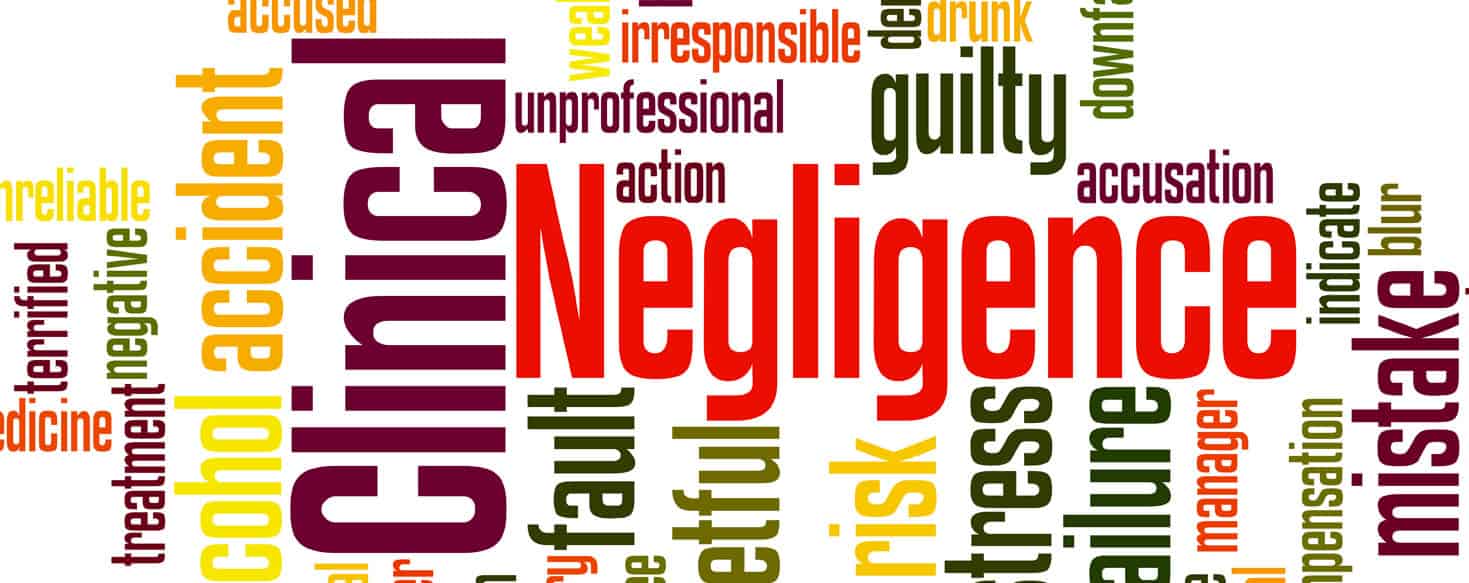How to approach issues of fact in clinical negligence cases
 Negligence NHS PLP
Negligence NHS PLPWritten by Hylton Armstrong
Parklane Plowden’s Howard Elgot (instructed by Hudgell Solicitors) recently successfully represented the Claimant at trial in the case of HTR (by his mother and litigation friend) v Nottingham University Hospitals NHS Trust [2021] EWHC 3228. In this article Hylton Armstrong looks at Mr Justice Cotter’s Judgment.
Background
The Claimant was born by emergency caesarean section on 10 October 2004 having suffered chronic partial hypoxia resulting in asymmetric quadriplegic cerebral palsy. The Claimant, by his litigation friend LRJ, alleged negligence on the part of a then SHO at an antenatal clinic appointment at Nottingham University Hospital 4 days earlier.
The Claimant’s case was that LRJ made it clear at the appointment that she had experienced reduced fetal movement, and that further investigations ought to have been arranged. The Defendant accepted that a maternal report of reduced fetal movement is a matter that requires further investigation, but denied LRJ raised such a concern. The case proceeded to a breach of duty only trial with the issue being a wholly factual one.
Evidence
For the Claimant, LJR and various family members gave evidence. LRJ appears to have had a relatively clear recollection of the appointment, which happened to take place on her wedding anniversary.
For the Defendant, the SHO provided 3 written statements, one of which turned out to be ‘seriously misleading’ in relation to an issue about training on use of portable US scanners. On the central issue the SHO had no recollection of the appointment, which was not surprising given the passage of time. Instead, the SHO relied on the records which included no explicit reference to reduced fetal movements, and instead appeared to confirm ‘Active FMs’.
Decision
Mr Justice Cotter found that LRJ did tell the SHO she was concerned about reduced fetal movement. In doing so he noted:
- Records are usually of very considerable importance, but here they were only of some assistance on the central issue.
- There was an important distinction between reduced movement and no movement whatsoever. As such a record of ‘active’ fetal movement is not of itself contradictory to an expression of concern about ‘reduced’ fetal movement.
- The SHO’s evidence needed to be treated with considerable causation, because of her subsequent years of practice, especially post 2011 when the emphasis on fetal movement changed to a degree.
- The finding must mainly turn on an assessment of LRJ’s recollection, which was clear.
Analysis
This case is particularly notable for two reasons.
Firstly, the claim may be one of the biggest successful contested clinical negligence liability trials in recent years, with the value being estimated by the Claimant’s lawyers to be up to £20m.
Secondly, Mr Justice Cotter’s Judgment includes an extremely useful comprehensive summary of most of the key cases concerning findings of fact in the context of clinical negligence cases.
For practitioners, below is a summary of the key cases and text referred to in Mr Justice Cotter’s Judgement, and then an attempt by me to succinctly summarise the current key/basic principles.
KeyCases
Gestmin SGPS SA v Credit Suisse (UK) Limited [2013] EWHC 3560 (Comm):
[16] While everybody knows that memory is fallible, I do not believe that the legal system sufficiently absorbs the lessons of a century of psychological research into the nature of memory and the unreliability of eye witness testimony. One of the most important lessons of such research is that in everyday life we are not aware of the extent to which our own and other peoples’ memories are unreliable and believe our memories to be more faithful then they are. Two common (and related) errors are supposed: (1) that the stronger and more vivid is our feeling or experience of recollection, the more likely the recollection is to be accurate; and (2) that the more confident another person is in their recollection, the more likely their recollection is to be accurate.
[17] Underlying both these errors is a faulty model of memory as a mental record which is fixed at the time of experience of an event and then fades over (more or less slowly) over time. In fact, psychological research has demonstrated that memories are fluid and malleable, being constantly rewritten whenever they are retrieved. This is true even of so-called ‘flash bulb’ memories, that is memories of experiencing or learning of a particularly shocking or traumatic event. (The very description ‘flash bulb’ memory is in fact misleading, reflecting as it does the misconception that memory operates like a camera or other device that makes a fixed record of an experience). External information can intrude into a witness’s memory, as can his or her own thoughts and beliefs, and both can cause dramatic changes in recollection. Events can come to be recalled as memories which have not happened, which did not happen at all or which happened to someone else (referred to in the literature as a failure of source memory). that the more confident another person is in their recollection, the more likely their recollection is to be accurate.
[18] Memory is especially unreliable when it comes to recalling past beliefs. Our memories of past beliefs are revised to make them more consistent with our present beliefs. Studies have also shown that memory is particularly vulnerable to interference and alteration when a person is presented with new information or suggestion about an event in circumstances where his or her memory of it is already weak due to the passage of time.
[…]
[22] The best approach for a judge to adopt in the trial of a commercial case is, in my view, to place little if any reliance at all on witnesses’ recollections of what was said in meetings and conversations, and to base factual findings on inferences drawn from the documentary evidence and known or probable facts.
Carmarthenshire County Council v Y [2017] EWFC 36
[17] In my opinion this approach applies equally to all fact-finding exercises, especially where the facts in issue are in the distant past. This approach does not dilute the importance that the law places on cross-examination as a vital component of due process, but it does place it in its correct context.
Synclair v East Lancashire Hospitals NHS Trust [2015] EWCA Civ 1283
[12] It is too obvious to need stating that simply because a document is apparently contemporary does not absolve the court of deciding whether it is a reliable record and what weight can be given to it. Some documents are by their nature likely to be reliable, and medical records ordinarily fall into that category. Other documents may be less obviously reliable, as when written by a person with imperfect understanding of the issues under discussion, or with an axe to grind.
EW v Johnson [2015] EWHC 276
[71] I turn to the evidence of Dr Johnson. He did not purport to have a clear recollection of the consultation but depended heavily upon his clinical note of the consultation, and his standard practice. As a contemporaneous record that Dr Johnson was duty bound to make, that record is obviously worthy of careful consideration. However, that record must be judged alongside the other evidence in the action. The circumstances in which it was created do not of themselves prevent it being established by other evidence that that record is in fact inaccurate.
HXC v Hind & Craze [2020] EWHC (QB) (5th October 2020)
[137] In my judgment a court can and often will taking a starting point, but no more than a starting point, that a contemporaneous entry made by a medical professional is likely to be a correct and accurate record of what was said and done at a consultation/examination.
Pomphrey v Secretary of State for Health & North Bristol NHS Trust [2019] EWHC QBD [2019] Med LR Plus 25:
[31] I start with some very general and basic propositions. When evaluating the evidence of a witness whose testimony has been challenged it should be broken down into its component parts. If one element is incorrect it may, but does not necessarily mean, that the rest of the evidence is unreliable. There are a number of reasons why an incorrect element has crept in. Apart from the obvious loss of recollection due to the passage of time, there may be a process of conscious or subconscious reconstruction or exposure to the recollection of another which has corrupted or created the recollection of an event or part of an event.
[32] The court must also have regard to the fact that there can be bias, conscious or subconscious within the recollection process. When asked to recall an event that took place some time ago within the context of criticism people often take an initial stance that they cannot have been at fault; all the more so if the act in question was in terms of their ordinary lives; unmemorable. There is a tendency to fall back on usual practice with the tell-tale statement being I would have rather than I remember that I did.
[33] To approach the exercise of fact finding in a complex case (when faced with stark conflicts in witness evidence) as necessarily requiring all the pieces of the jigsaw to be fitted together is often both flawed and an exercise in the impossible. This is because individual pieces of the jigsaw may be wrong, distorted to a greater or lesser degree or absent. Indeed, it is not possible to make findings if the state of the evidence or other matters mean that it is not proper to do so (see generally Rhesa Shipping Co SA v Edmunds (The Popi (M) [1985] 1 W.L.R. 948). However, often a sufficient number of pieces may be fitted together to allow the full picture to be seen.
Key Principles
In an attempt to distil the case law referred to above into a simple set of key principles, I suggest:
- The best approach is to base findings on documents and known/probable facts.
- The starting point is that contemporaneous medical record are likely to be a correct.
- However, records should still be given careful consideration.
- This involves judging the record alongside the other evidence in the action.
- Just because a document is contemporary does not necessarily mean it a reliable record.
- A witness’s recollection should also be treated cautiously.
- When evaluating a witness their evidence should be broken down into its parts.
- If one element is incorrect it may, but doesn’t necessarily mean, the rest is unreliable.
- The court must also consider that there can be conscious or subconscious bias.
- People often take an initial stance, or fall back on usual practice.
- In a complex case it may be impossible to fit all the pieces of the jig saw together.
- However, sometimes a sufficient number of pieces can be fitted together, to allow the full picture to be seen.
Author

Hylton Armstrong is a specialist personal injury & clinical negligence Barrister, and head of Parklane Plowden’s clinical negligence group.










